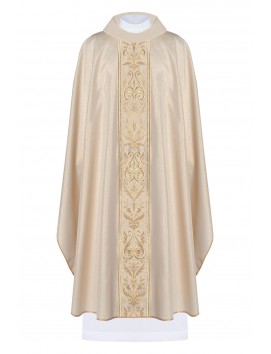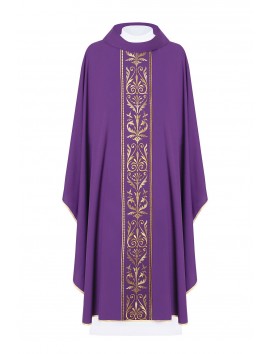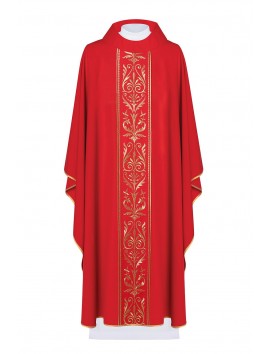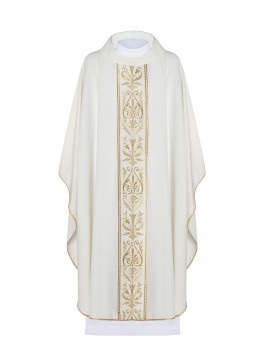In the Catholic Church, purple is a liturgical color most commonly associated with the seasons of Advent and Lent. During these times, priests, deacons, and other ministers may wear purple vestments during Mass and other liturgical celebrations. Purple is also worn during certain feasts and solemnities, such as the Feast of the Epiphany and the Feast of Christ the King. In addition, the Pope may wear purple vestments on certain occasions, such as the Stations of the Cross on Good Friday. The use of purple in the Catholic Church symbolizes penance, preparation, and mourning, as well as the royalty and majesty of Christ.

Who wears purple vestments?
In the Catholic Church, purple vestments are worn by priests, deacons, and other ministers during certain liturgical seasons and celebrations. The color purple is most commonly associated with the seasons of Advent and Lent, during which time altar cloths, priestly chasubles, and other liturgical items may also be purple. In addition, purple vestments may be worn during certain feasts and solemnities, such as the Feast of the Epiphany and the Feast of Christ the King. The Pope may also wear purple vestments on certain occasions, such as the Stations of the Cross on Good Friday. The use of purple in the Catholic Church symbolizes penance, preparation, and mourning, as well as the royalty and majesty of Christ.
What rank of priest wears purple?
In the Catholic Church, the color of the vestments worn by priests, bishops, and cardinals does not indicate their rank. Instead, it is the style of their vestments and other liturgical items that indicates their status within the Church hierarchy. For example, bishops wear a miter and carry a crosier, while cardinals wear a distinctive red hat and are addressed as "Your Eminence. However, during certain liturgical seasons and celebrations, such as Advent and Lent, all priests, regardless of rank, may wear purple vestments as a symbol of penance, preparation, and mourning.
Why does a bishop wear purple?
In the Catholic Church, bishops wear purple vestments during certain liturgical seasons and celebrations, such as Advent and Lent. The use of purple during these seasons symbolizes penance, preparation, and mourning. In addition, bishops are seen as shepherds of their flock, and the color purple represents their role as spiritual leaders who guide and protect their people.
Furthermore, the use of purple vestments by bishops is also a sign of their office as bishops. Bishops are considered members of the higher clergy and are responsible for leading their diocese, which is a geographical area within the Church. The use of purple vestments, along with other liturgical items such as the miter and crosier, signifies the bishop's authority and leadership within the Church.
Why do bishops wear purple?
Bishops wear purple vestments during certain liturgical seasons and celebrations, such as Advent and Lent, as a symbol of penance, preparation, and mourning. This is because these seasons are times of reflection, repentance, and spiritual discipline for Christians. The use of purple during these seasons helps to create a solemn and contemplative atmosphere, encouraging believers to focus on their spiritual lives and prepare for important events such as Christmas and Easter.
In addition, purple is traditionally associated with royalty, and bishops are seen as spiritual leaders and shepherds of their flock. The use of purple vestments also signifies the bishop's office as a member of the higher clergy and his responsibility to lead his diocese. The miter and crosier, also associated with bishops, are used to further symbolize their authority and leadership within the Church.
What does the purple cassock mean?
The purple cassock is a garment worn by certain members of the clergy, such as bishops, cardinals, and certain monastic orders. The color purple symbolizes penance, preparation, and mourning, and is typically worn during liturgical seasons such as Advent and Lent, as well as for certain important celebrations and ceremonies.
For bishops and cardinals, the purple cassock is a sign of their office and authority within the Church. It is a symbol of their role as spiritual leaders and shepherds of their flock, guiding and protecting their people.
In some monastic orders, the purple cassock is worn as a symbol of humility and penance, reflecting the order's commitment to a life of prayer, contemplation, and self-discipline.
Overall, the purple cassock is a symbol of faith and devotion, representing the spiritual journey of those who wear it and the important role they play in the Church.




















